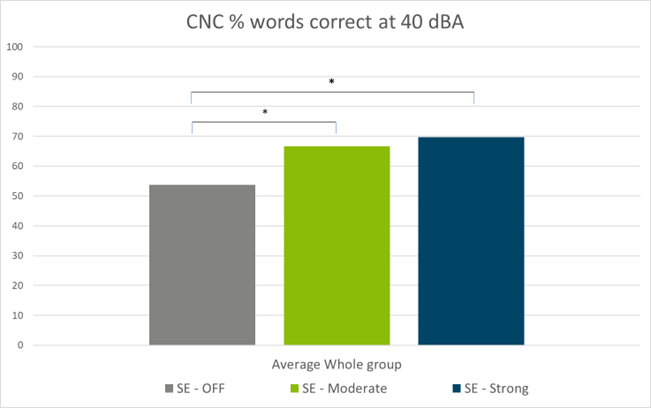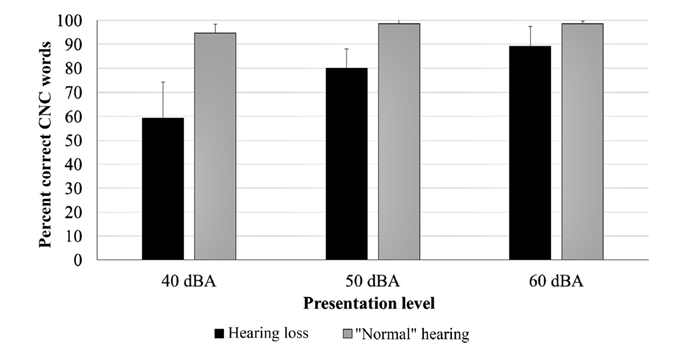
Giving your young clients access to soft speech
Children with normal hearing can overhear soft conversations, why shouldn’t a child with hearing loss? Learn about the benefits of Speech Enhancer feature in Phonak Sky hearing aids.
Hearing aids do more for children with hearing loss than simply giving them access to speech to help them to learn to understand speech and to speak themselves.
Let’s think about this a bit further. Access to conversations and environmental sounds also assists with their social and emotional (e.g., developing strong relationships), and their cognitive development (e.g., making sense of the world around them). Giving them access to as much speech as possible is critical to maximize language outcomes.1
But not all speech is at an ‘average’ volume level. Speech can be at a distance and therefore softer by the time it reaches the child. The person speaking can also be soft spoken. In a 2022 publication by Wolfe. J, et al.,1 we learned that children with normal hearing can hear soft conversations significantly better than children with hearing loss even when they are aided.
Considering the need for young children to be able to ‘overhear’ speech, how can we give them access to this soft speech?
Benefits of Speech Enhancer feature
Technology changes all the time. So, the next question is, how can we provide children with greater access to the soft speech with today’s technology?
Phonak Paradise and Lumity hearing aids have a feature called Speech Enhancer, an adaptive algorithm designed to enhance the peaks of a speech signal in quiet situations. Could this feature be beneficial for kids to provide them access to soft speech in quiet environments?
Thanks to a study completed Hearts for Hearing by Manning. J, et al (2023)4 we now have the answer to that question. Results from the study show that activating Speech Enhancer provides children with an additional 15% understanding of soft speech. See Figure 1 below.

Figure 1: Average aided CNC word-recognition scores at three presentation levels (off, moderate, strong) at 40 dBA for children with hearing loss listening with hearing aids
What about prescription formula?
Scollie and colleagues (2010) compared real-world preferences with hearing aids programmed with DSL v4.1and NAL-NL1 in school-aged children with mild-severe hearing loss.1
Results indicated that the children preferred DSL for soft level speech, when speech was coming from behind, and when they wanted speech to sound louder.
The same group of children preferred NAL-NL1 when in background noise or when they were in environments with high-input levels, and they wanted to reduce the loudness.
This finding was backed up by Marriageand colleagues (2013) who found that the DSL prescription methods (DSL i/o and DSL v5) led to better detection and discrimination of low-level speech sounds than NAL-NL1 for children aged 2 to 9 years, using age-appropriate speech test materials.3 Findings from both studies make sense when you consider the additional gain that results from DSL compared with NAL-NL1.
In the Wolfe et al.1 study (2022), we learned the mono-syllabic word recognition scores for very soft (40dBA), soft (50dBA) and moderate (60dBA) presentation levels were significantly worse for children with hearing loss compared with children with normal hearing. This is when they were using hearing aids programmed with DSL v5. See Figure 2 below.
So, prescription formula alone is not the answer.

Figure 2: Average CNC word-recognition scores at three presentation levels for children with hearing loss listening with hearing aids and children with ‘normal’ hearing sensitivity listening unaided. Note. Bars indicate 1 standard deviation.
What this means for your daily practice
Given that prescription formula alone is not the answer for picking up soft and distant speech, this recent study by Manning and colleagues suggests that by simply activating Speech Enhancer for your young clients, they can benefit from an additional 15% understanding of soft speech.
The Hearts for Hearing poster was presented at the 7th European Pediatric Conference in Berlin and is available for you to enjoy at www.Phonak.com/evidence.
References:
1. Wolfe, J., Duke, M., Miller, S., Schafer, E., Jones, C., Rakita, L., Dunn, A., Battles, J., Neumann, S., & Manning, J. (2022). Low-level speech recognition of children with hearing aids. Journal of the American Academy of Audiology, 33(4), 196–205. https://doi.org/10.1055/a-1692-9670
2. Scollie, S., Ching, T.Y.C., Seewald, R., et al. (2010). Evaluation of the NAL-NL1 and DSL v4.1 prescriptions for children: preference in real world use. Int J Audiol, 2010a; 49(Suppl 1): S49–S63.
3. Marriage, J. E., Vickers, D. A., Baer, T., Glasberg, B. R., & Moore, B. C. J. (2018). Comparison of different hearing aid prescriptions for children. Ear and Hearing, 39(1), 20–31. https://doi.org/10.1097/AUD.0000000000000460
4. Manning, J., Wolfe, J., Neumann, S., Nelson, J., & Dunn, A. (2023). The use of Speech Enhancer with pediatric hearing aid users, [Conference Poster], 7th Phonak European Conference, Berlin, May 11 – 13 2023. Retrieved from www.phonak.com/evidence.
